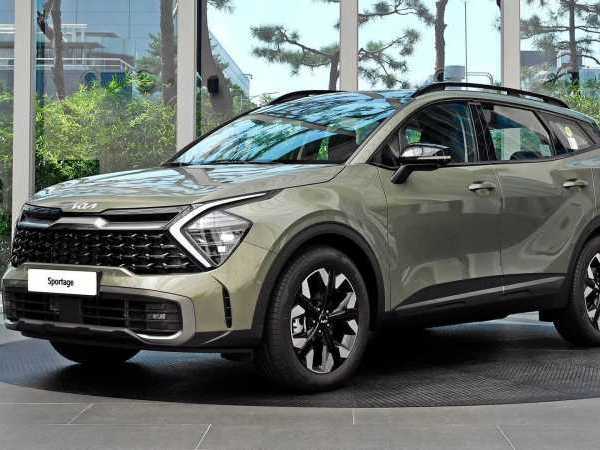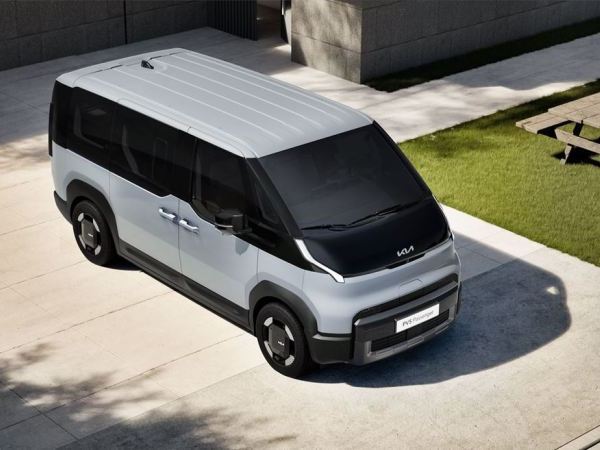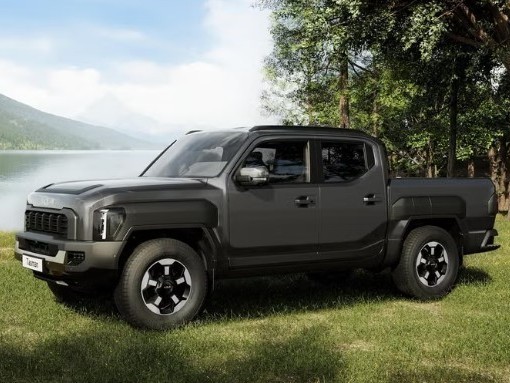Q
Is the Kia Rio fuel efficient?
The Kia Rio performs well in terms of fuel economy, making it particularly suitable for the urban road conditions and daily commuting needs in Malaysia. Its 1.4 - liter and 1.6 - liter naturally aspirated engines paired with a 6 - speed automatic transmission can offer a relatively smooth driving experience. Meanwhile, the official data shows that the combined fuel consumption is approximately 5.5 to 6.0 liters per 100 kilometers, which is above the average level among vehicles in the same class. For Malaysian drivers who often encounter congested traffic, the fuel efficiency of the Rio can help reduce the daily cost of using the vehicle. Additionally, the lightweight body design and optimized aerodynamic characteristics of the Rio further enhance its fuel economy.
If you're interested in fuel - efficient models, you can also consider other vehicles in the same class. They may adopt different fuel - saving technologies, such as turbocharging or hybrid systems. However, the advantage of the Rio lies in its cost - effectiveness and reliability, making it suitable for consumers with a limited budget who still hope to get stable performance. Overall, the Kia Rio is an economical small car suitable for city driving, and its fuel efficiency performance is worth considering.
Special Disclaimer: This content is published by users and does not represent the views or position of PCauto.
Related Q&A
Q
Does the Kia Rio last long?
As an economical subcompact car, the Kia Rio has an average durability performance in the Malaysian market. Its service life mainly depends on daily maintenance and driving habits. Under normal circumstances, if you regularly replace key consumables such as engine oil and transmission fluid and follow the manufacturer's maintenance manual, it's achievable to drive 150,000 to 200,000 kilometers. However, the tropical climate will have a certain impact on the aging speed of rubber parts and electronic components. It is recommended to pay special attention to the maintenance of the air - conditioning system and the sealing strips.
The 1.4L and 1.6L naturally aspirated engines installed in this car have mature technology and relatively low failure rates. But compared with Japanese models in the same class, its second - hand resale value is slightly inferior. For Malaysian consumers with a limited budget, the cost - effectiveness of the Rio is worth considering. However, if you're looking for a longer usage cycle, it's recommended to give priority to the version equipped with a CVT transmission to reduce power loss. At the same time, pay attention to choosing the original factory warranty service to lower the long - term ownership cost. After all, in a hot and rainy environment, the stability of the electronic system is particularly important.
Q
How much air should be in my Kia Rio tires?
According to the official recommendation of the Kia Rio, the standard tire pressure usually ranges between 32 and 35 PSI (pounds per square inch). The specific value may vary slightly depending on the model year, tire specifications, and load conditions. It is recommended to refer to the vehicle user manual or the label on the driver's door frame for accurate information. In Malaysia's tropical climate, tire pressure may rise slightly due to high temperatures. Therefore, it is advisable to check and adjust the tire pressure when the tires are cool (such as in the morning or after the vehicle has been parked for 3 hours) to ensure accurate readings. Regularly checking tire pressure not only improves fuel efficiency and driving stability but also extends tire life and enhances safety. If you often drive long distances or carry heavy loads, you can appropriately increase the tire pressure by 1 to 2 PSI, but do not exceed the maximum pressure value marked on the side of the tire. Additionally, it is recommended to check tire pressure at least once a month and monitor it more frequently during seasonal changes because temperature variations can affect tire pressure. If you notice an abnormal drop in tire pressure, it may be due to a nail puncture or a leaky valve stem. You should have it repaired promptly to avoid potential risks.
Q
Does the Kia Rio have air conditioning?
Yes, the version of the Kia Rio sold in the Malaysian market is indeed equipped with an air - conditioning system. This is one of the standard features of the model, capable of providing a comfortable driving and riding environment for both drivers and passengers. Especially in Malaysia's hot and humid climate, the air - conditioning system is particularly important.
The air - conditioning system of the Kia Rio usually includes manual or automatic temperature control functions. The specific configuration may vary depending on the year and model version, but generally, it can meet the daily usage needs. Moreover, modern automotive air - conditioning systems not only focus on cooling performance but also increasingly take energy efficiency and environmental protection factors into account. For example, they use more environmentally friendly refrigerants and optimize the system design to reduce energy consumption.
For Malaysian consumers, when choosing a car, besides the air - conditioning system, they can also pay attention to the vehicle's sound insulation, seat material, and overall interior design. These factors all affect the riding comfort. As an economy - class sedan, the Kia Rio provides basic comfort features while emphasizing fuel economy and reliability, making it suitable for urban commuting and family use.
Q
Does Kia have a good resale?
In the Malaysian market, the resale value of Kia cars is influenced by factors such as brand recognition, vehicle model inventory, and market demand. Overall, it performs slightly above average. Some popular models like the Kia Sorento or Kia Carnival are quite popular in the used - car market due to their spacious practicality and rich configurations, and their resale values are relatively stable.
In recent years, Kia has enhanced its product competitiveness by updating its design language and improving technological configurations, which provides some support for the residual value of used cars. However, compared with Japanese brands like Toyota or Honda, the resale prices of Kia cars may be slightly lower. Nevertheless, the cost - effectiveness advantage of Kia models can still attract buyers with limited budgets in the used - car market.
It is recommended that car owners conduct regular maintenance and keep complete service records, which can significantly enhance their bargaining power during resale. Malaysian consumers can also refer to the transaction data on local used - car platforms when purchasing new cars, and combine it with their own vehicle - usage cycle plans to more rationally evaluate the long - term ownership costs.
Q
Is a Kia Rio bigger than a Toyota Corolla?
In the Malaysian market, the Kia Rio and the Toyota Corolla belong to different vehicle classes. As a compact car (C-Segment), the Corolla is generally larger in overall size compared to the Rio, which is a subcompact car (B-Segment). Taking the latest models as an example, the Corolla usually has a length of over 4.6 meters and a wheelbase of about 2.7 meters, while the Rio typically has a length of around 4.3 meters and a wheelbase of about 2.6 meters. This means the Corolla can offer more spacious rear - legroom and a larger trunk capacity (about 470 liters compared to the Rio's 325 liters). However, thanks to its more compact body, the Rio is more flexible in city driving and easier to park.
It's worth noting that when choosing a car, Malaysian consumers need to consider their actual needs in addition to the size. For instance, the Corolla Hybrid version, with Toyota's mature hybrid technology, is more suitable for long - distance commuting, while the Rio is more cost - effective due to its lower price and five - year unlimited - mileage warranty. Both cars are suitable for Malaysian road conditions, but the Corolla has a slightly higher ground clearance (16.5 cm compared to the Rio's 15 cm), making it a bit more adaptable to rural roads.
It is recommended to test - drive the cars to experience the difference in space before purchasing. Also, be aware that the specific configurations of the locally assembled (CKD) versions may differ from the international versions.
Q
What to look for when buying a Kia Rio?
When purchasing the Kia Rio, Malaysian consumers should focus on several aspects. First, the powertrain. The Rio offers two engine options, a 1.4L and a 1.6L, which are suitable for city driving. It is recommended to take a test drive to experience its smoothness and fuel economy. Official data shows that it has excellent fuel - consumption performance.
Second, the safety features. Check whether it is equipped with basic configurations such as ABS, EBD, and six airbags. Higher - end models may come with more advanced features.
In terms of space, the rear - legroom and trunk capacity of the Rio are suitable for small families. It is advisable to experience the comfort on - site.
The interior materials are mainly practical. Pay attention to the convenience of the center - console operation and the functions of the entertainment system.
Moreover, it is recommended to check the latest promotional policies, including free maintenance times or extended warranty offers. In Malaysia's hot climate, it is necessary to specifically test the air - conditioning's cooling effect.
The coverage of the after - sales service network and the supply of parts are also key considerations. It is recommended to find out the distribution of nearby authorized repair centers in advance.
This car has a medium resale value in the used - car market, making it suitable for young buyers with limited budgets or as a city commuter. However, before purchasing, be sure to conduct a comprehensive vehicle inspection, including checking the chassis and inquiring about the accident history, to ensure the vehicle is in good condition.
Q
Does the Kia Rio have a reversing camera?
Based on the configuration information of the Kia Rio in the Malaysian market, some high - end versions are indeed equipped with a reversing camera. Especially in recent model years, to enhance safety, this feature is commonly included in the standard or optional list. You need to confirm it according to the actual production year and configuration level. The reversing camera can display the real - time rear view on the center console screen and assist parking with dynamic guiding lines. It is particularly useful for the narrow streets or crowded parking lots commonly seen in Malaysia. If your vehicle is not factory - equipped with a reversing camera, you can have it installed by an authorized dealer or a professional modification shop. However, you need to ensure the legality by choosing accessories certified by the local JPJ.
In addition, modern vehicles often combine the reversing camera with radar sensors to form a multi - mode warning system. Even if the base version doesn't have a camera, most Rio models are still equipped with rear parking radars to provide audible alerts. It is recommended that car owners refer to the vehicle's user manual or contact the official Kia customer service in Malaysia to check the specific configuration. At the same time, regularly clean the camera lens to prevent rain or dirt from affecting the imaging quality.
Q
How many litres per 100km does a Kia Rio take?
According to official data, the fuel consumption of the Kia Rio varies depending on the model and powertrain configuration. Generally, in city driving conditions, the fuel consumption is about 6.5 to 7.5 liters per 100 kilometers. On the highway, it can drop to 5.0 to 5.8 liters per 100 kilometers. The combined fuel consumption is approximately between 5.8 and 6.5 liters per 100 kilometers. The specific figures are also affected by driving habits, road conditions, and the vehicle's maintenance status. For Malaysian consumers, as an economy sedan, the fuel consumption of the Kia Rio is relatively reasonable, making it suitable for daily commuting and long - distance driving. In addition, fuel consumption data is an important indicator for measuring a vehicle's economy. Malaysian car owners can further optimize the fuel consumption performance and reduce the cost of vehicle use by performing regular maintenance, keeping the tire pressure normal, and avoiding sudden acceleration and braking through good driving habits.
Q
Is Kia Rio good for road trips?
As an economical subcompact car, the Kia Rio is suitable for short or medium-distance road trips in the Malaysian market. Its 1.4L and 1.6L naturally aspirated engines offer smooth power output and good fuel economy, which helps save on fuel costs during long drives. With its relatively small body size, it's very maneuverable in the city. While its stability on the highway is decent, the suspension is tuned for comfort and can handle most road conditions in Malaysia.
The interior space is sufficient for two people, but it might feel a bit cramped when the rear seats are fully occupied. The trunk has a capacity of 265 liters, which can hold a small amount of luggage. It's recommended to use a roof box to expand the storage space.
In terms of safety features, dual airbags, ABS, and a vehicle stability system come as standard, but it lacks advanced driving assistance functions. So, it's important to take breaks during long drives. The noise insulation is at a medium level among cars in the same class, and wind noise is quite noticeable at high speeds. The factory - equipped tires are suitable for city use. If you often drive on mountain roads or in rainy conditions, it's advisable to upgrade to tires with better grip.
The air - conditioning system works well in the tropical climate. The maintenance cost is low, and there's an ample supply of parts, making it a great choice for young families or couples with a limited budget. If you're looking for more space and stronger power, you might consider a higher - class model. However, the Rio still remains competitive in terms of cost - effectiveness.
Q
Why does my Kia Rio keep shutting off?
The frequent stalling of your Kia Rio can be caused by various factors. First, check the fuel system. Ensure that components like the fuel pump or injectors are working properly, and see if the fuel filter is clogged. These issues can affect fuel supply. Second, examine the ignition system, including the spark plugs, ignition coils, and high - tension wires. Aging or damage to these parts can lead to poor ignition. Additionally, malfunctions in engine sensors such as the crankshaft position sensor or oxygen sensor may also cause the engine to stall. It is recommended to use a diagnostic tool to read the fault codes for precise problem - location.
Moreover, the hot and humid climate in Malaysia may accelerate circuit aging or cause carbon buildup in the intake system. Regular maintenance, such as cleaning the throttle body and replacing the air filter, can help prevent such problems. If the problem persists, it is advisable to contact an authorized repair center as soon as possible for professional inspection. This can avoid more significant damage from the accumulation of minor issues. Usually, pay attention to abnormal vehicle phenomena such as unstable idling or difficult starting, which can help detect problems at an early stage.
Latest Q&A
Q
What is the difference between the 2024 and 2025 BMW 5 Series?
There are some differences between the 2024 and 2025 BMW 5 Series models. In terms of pricing, the 2024 520i starts at RM 332,800, with the 520i M Sport variant coming in at RM 349,800. The 2025 530i M Sport, on the other hand, is priced at RM 399,800.
Under the hood, the 2024 520i engines deliver either 210PS or 208PS, while the 2025 530i M Sport ups the ante with a 258PS powerplant. Performance-wise, the 2024 models top out at 230km/h and sprint from 0-100km/h in 7.5 seconds. The 2025 model pushes that top speed to 250km/h and shaves the 0-100km/h time down to just 6.2 seconds.
Looking at the specs, some 2024 trims have rear seats with manual adjustments or fixed configurations, whereas the 2025 model gets a 40:20:40 split-folding rear seat setup. Audio systems also see an upgrade: most 2024 models feature Harman Kardon speakers, while the 2025 model steps up to a Bowers & Wilkins surround sound system.
Additionally, the 2025 5 Series hit dealerships on March 13, 2025, and comes with a 2-year unlimited mileage warranty. The 2024 models first arrived on September 2, 2024.
Q
How much is insurance for a 2024 BMW 5 Series?
The insurance cost for the 2024 BMW 5 Series in Malaysia varies based on several factors, typically ranging from RM5,000 to RM15,000 annually. The exact amount depends on the vehicle model (such as 520i, 530e, or M550i), engine displacement, the owner's age, driving record, type of policy (comprehensive or third-party), and the insurance company's discount policies. For instance, the high-performance M550i, with its higher repair costs, will have significantly higher premiums than the entry-level 520i, while the hybrid 530e may qualify for partial insurance discounts due to its eco-friendly features. Additionally, Malaysia's insurance market is influenced by the No Claim Discount (NCD), where drivers with consecutive claim-free years can enjoy a maximum 55% reduction in premiums. It's advisable to obtain accurate quotes through insurance company websites or comparison platforms before purchasing a car, and also to understand the additional services offered by Malaysian car insurance, such as roadside assistance or windscreen coverage, as these details can impact the final decision. Notably, luxury car insurance usually includes higher third-party liability coverage limits to comply with local regulatory requirements, and owners can also adjust the excess amount according to their needs to balance premium costs.
Q
What is the maintenance cost of a 2024 5 Series?
The maintenance costs for the 2024 BMW 5 Series in Malaysia can vary depending on the specific model and driving habits, but generally speaking, the regular servicing fees for the first 3 years of a new car are roughly between RM3,000 to RM5,000 per year. This depends on the chosen original maintenance package and the actual mileage driven. BMW offers various maintenance plan in Malaysia, allowing owners to opt for one-time payment or installment plans. These packages typically cover basic items like oil changes, filter replacements, and brake inspections. If the vehicle is equipped with more high-tech features, such as active suspension or a hybrid system, the long-term maintenance costs might be slightly higher. However, BMW's after-sales service network in Malaysia is quite comprehensive, with many authorized service centers capable of providing professional maintenance and repair services. To reduce long-term ownership costs, it's advisable for owners to follow the manufacturer's recommended regular maintenance schedule and use genuine parts. This not only extends the vehicle's lifespan but also helps maintain a good resale value. Additionally, given Malaysia's hot and humid climate, owners should pay extra attention to maintaining the air conditioning system and battery to ensure the vehicle always stays in optimal condition.
Q
How much is a used BMW 5 Series 2024?
In the current Malaysian market, used 2024 BMW 5 Series models aren't widely available yet due to the new car's relatively recent launch. However, based on the market trends for used BMW 5 Series of similar model years and conditions, prices typically range from RM250,000 to RM350,000. The exact price depends on factors like trim level, mileage, maintenance history, and whether the original factory warranty is still valid. For instance, higher-spec models like the 530i M Sport might be closer to the upper end of that range, while entry-level variants such as the 520i would be relatively lower. When buying a used car, it's advisable to go through officially certified pre-owned channels or reputable dealerships to ensure the vehicle has undergone rigorous inspection and comes with warranty coverage. Additionally, the BMW 5 Series is renowned for its luxurious interior, advanced technology, and driving dynamics – the 2024 model, in particular, likely features the updated iDrive system and mild-hybrid technology, which also influence used prices. In Malaysia, used car prices can also be affected by import duties, road tax, and insurance costs, so it's recommended to thoroughly assess the total cost of ownership and compare different car sources to get the best value for money before making a purchase.
Q
How many BMW 5 Series sold in 2024?
As of 2024, official sales figures for the BMW 5 Series in Malaysia haven't been formally released yet. But looking at BMW Malaysia's past market performance and industry trends, this luxury sedan has always maintained steady demand locally, especially thanks to its blend of sporty performance and business luxury that really resonates with local buyers. For 2024, the BMW 5 Series has rolled out more eco-friendly powertrain options, like plug-in hybrid models, which should further appeal to buyers who want both efficiency and high performance. In the Malaysian market, luxury car sales are usually influenced by the economic environment, consumption tax policies, and brand promotional activities. Interested consumers are advised to follow BMW Malaysia's official website or authorized dealers for the latest and most accurate information. Additionally, as a representative of mid-size luxury sedans, the BMW 5 Series competes with models like the Mercedes-Benz E-Class and Audi A6, which also have a strong presence in the Malaysian market. Consumers can make a comprehensive comparison based on personal preferences and budget.
View MoreRelated News

In Malaysia, which sliding door MPVs are available?
MichaelOct 30, 2025

Kia Sportage: Superior Suspension for Smooth Ride
Kevin WongMay 19, 2025

Kia Carnival: Spacious & Versatile for Every Journey
Kevin WongMay 19, 2025

Kia reveals all details of PV5, with a maximum range of up to 400 kilometers
LienMar 11, 2025

173L cargo box, 3500kg towing capacity, KIA Tasman meets all your needs!
MichaelOct 31, 2024
View More













 Cars
Cars




Pros
Cons